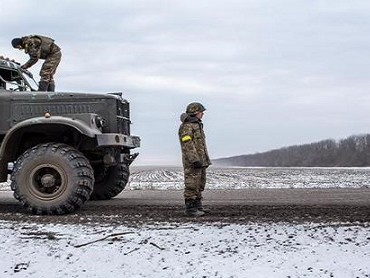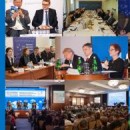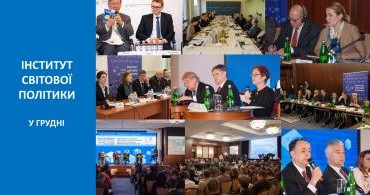An article by James Sherr, member of the Institute of World Policy`s Supervisory Board and Associate Fellow at Chatham House (London) Providing critical military assistance to Ukraine would devalue Russia’s advantage in negotiations.
From the outset of the Ukraine crisis, the West has acted on the premise that economic sanctions would induce Russia to modify its actions. But while sanctions do constrain capacity, they do not constrain behaviour. Their immediate impact is bearable. Moreover, they do nothing to diminish Russia’s most usable and effective form of power: military force. Given the stakes, the case for strengthening Ukraine’s defences is compelling.
The Russian military offensive of August 2014 secured diplomatic concessions in Minsk that would not have been granted otherwise. An even more devastating offensive of January-February 2015, in blatant violation of the first Minsk agreement, produced a second Minsk accord even more flawed than the first. According to its terms, future election conditions, constitutional reform and the restoration of border control are subject to the agreement of the separatists, who have licence to withhold their consent indefinitely.
It is blindingly obvious to the Kremlin that the separatist enclaves are neither absorbable by Russia nor sustainable in the long term. They are useful solely as a bridgehead for securing Russia’s wider objectives in Ukraine: its ‘federalization’ (loss of sovereignty), ‘non-bloc status’ (enforced neutrality) and the abandonment of its European course. So far, military force has been the arbiter of this process.
But if Russia’s military card is devalued, so is the bridgehead. And there are good reasons to believe strengthening Kyiv’s military muscle would be effective.
Russia has underestimated Ukraine’s resilience. Ukrainian national sentiment and civil society have been strengthened by the war, especially in the east. It also has underestimated the capacity of Ukraine’s fighting forces. Despite 16 months of armed insurgency and two military offensives backed by regular Russian troops, Russia’s separatist allies control less than five percent of Ukraine’s mainland territory.
Russia’s military system is potent but under strain. Its battle groups are not occupation forces. They strike hard and withdraw. The maintenance of 40-50,000 troops in theatre have placed demands on ground forces units as far away as Kazakhstan and Vladivostok. There is reluctance to risk prolonged exposure of ethnic Russian servicemen to hostile Russian-speaking populations in eastern Ukraine.
Nevertheless, Ukraine’s armed forces lack the means to prevail in high-intensity combat against well-armed Russian troops. They are burdened by the hangover of a largely unreformed defence system, by distrust between volunteer units and higher command echelons, and by a deficit of competent command and staff officers above unit level. Yet they are also dangerously outmatched in hard capability. In the Debaltseve offensive, Russia brought into the field advanced weapons systems against which Ukraine had no countermeasures.
Kyiv needs capabilities that will protect its forces and slow down the battlefield. If opposition forces are likely to face effective resistance and protracted combat, they will be less likely to attack. And the equipment needed to achieve this — secure communications, electronic counter-measures and long-range passive counter-battery radar — are neither ‘lethal’ weapons nor politically high-profile. Yet, in their absence, even a well-trained and highly motivated force risks evisceration in battle.
Much has changed since President Obama first declined Ukraine’s request for non-lethal assistance, and NATO allies are now contributing to Ukraine’s defence in a variety of ways. The problem is that the contribution is unsystematic, uncoordinated and unevenly matched to Ukraine’s needs.
In many quarters, it is now axiomatic that a refocusing and enhancement of Western assistance will ‘provoke’ Putin into a dramatic escalation of the conflict. The risk exists. Yet there is nothing in Putin’s record to support this assumption. What has repeatedly provoked him however is weakness and bluff.
In a contest with high-risk players, there is no such thing as a risk-free policy. Failure to modify an ineffective policy invites at least as much danger as a more robust course. Today’s dangers are created by Russia’s political aims, its military actions and its increasingly febrile and conspiratorial view of the world. So far, within these ominous parameters, the Kremlin has behaved according to a rational calculus. In this calculus, no respect is shown to opponents who are stronger, but unwilling to use their strength.




Comments theme
Comments themeComments themeComments themeComments themeComments themeComments themeComments themeComments themeComments themeComments themeComments themeComments themeComments themeComments themeComments themeComments themeComments themeComments themeComments themeComments.